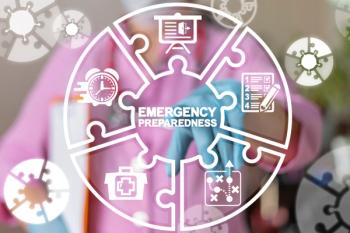
Psychiatric Emergency Strategies
Here we present how to assess safely patients who become oppositional or menacing in a clinic or office.
TIPSHEET:
SIGNS OF AGITATION IN A PATIENT
â Verbal: He or she becomes louder, demanding, and/or menacing; uses foul language, oppositional or forboding tone, and/or put-downs.
â Behavioral: He or she is unable to sit still, uses "fierce" eye contact, makes fists, tightens muscles, and/or tenses jaw.
MANAGEMENT OF PSYCHIATRIC EMERGENCIES IN THE CLINIC
â The safe assessment and successful resolution of a psychiatric emergency in the clinic begins well before the patient’s arrival and includes preparation of the physical environment and a well-trained staff.
â In determining whether a patient is dangerous, focus on factors that tend to elevate the patient’s risk of intentional or unintentional harm to self and others.
â If an empathetic response and safety planning by the clinician are not enough to diffuse a dangerous patient, referral and transfer to an emergency department are essential.
Note: Adapted from an article originally published in 2010 by Mark Newman, MD, and Divy Ravindranath, MD, MS, titled "
Newsletter
Receive trusted psychiatric news, expert analysis, and clinical insights — subscribe today to support your practice and your patients.














